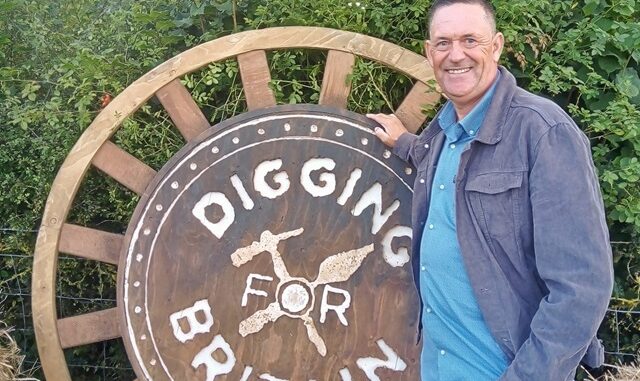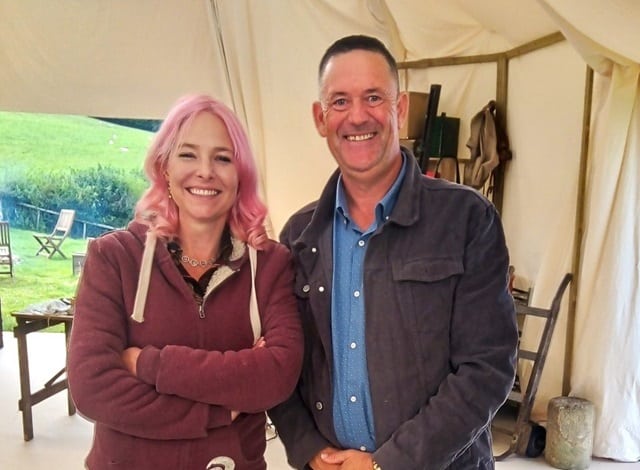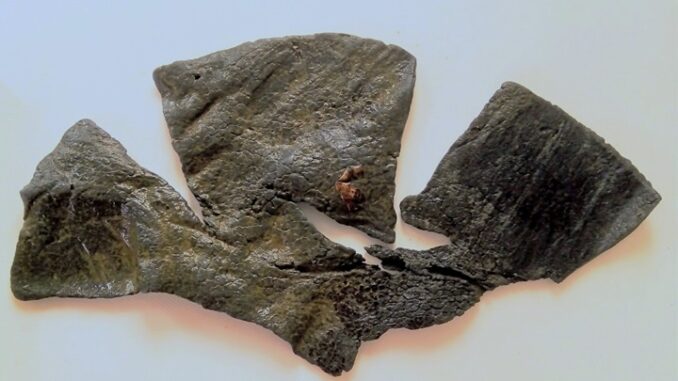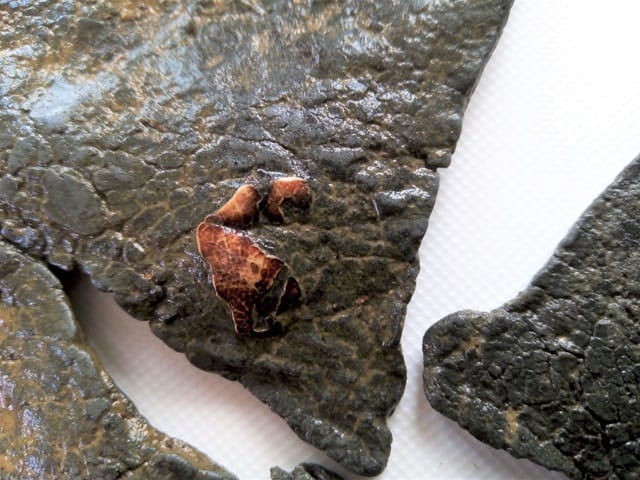
When you have unearthed a 3,000-year-old, late Bronze Age toddler’s shoe which is the oldest found in the British Isles and the smallest Bronze Age shoe found in the world, you might think it is an achievement that you can never top.
But for Birchington archaeologist Steve Tomlinson that has turned out not to be the case. Just six months after discovering the shoe piece while mudlarking, the dad-of-two made another incredible find – a piece of tanned leather thought to be from a water bottle or foraging bag that dates back an incredible 4,488 to 4,600 years to the Neolithic period.
The discovery, made in March last year just 60 ft away from the spot on the Thames Estuary where Steve found the shoe, is “ultra rare” and the first piece of Neolithic leather ever found in the British Isles.

Steve talked about the Bronze Age shoe and his latest find during an episode of Digging For Britain which was screened on BBC2 on Wednesday (January 10).
The shoe was carbon dated to 888-781BC, just under 3,000 years old and in the Late Bronze Age period.
The same process was used for the tanned leather piece and that was carbon dated to between 2578 BC – 2466 BC, making it some 1,700 years older than the shoe.

Steve said: “It’s extraordinary. It’s late Neolithic and between 4,600 – 4,488 years old. After meetings with the British Museum we think the leather is either part of a bag or a third part of a leather water bottle. The leather looks like it has been tanned inside and outside and this could be with beeswax which was very popular for waterproofing in the Neolithic period.
“This item dates to the time when the circle was built at Stonehenge.
“As far as we know it is the oldest piece of leather found in Britain and, to date, the first piece of Neolithic leather ever found in the British Isles.”

A red staining found on the leather may also be tanning agent, possibly from Ochre which is a type of clay and was also used by Neolithic man for waterproofing.
Prehistoric textiles like the shoe and the tanned leather bag or bottle rarely survive. The only chance is by finding them in anaerobic conditions such as bogs and mud, which prevent oxidation and chemical degradation.
This means the shoe and the tanned leather – which measures 21 centimetres across – are both of massive national and world importance.

Steve said: “It is so exciting, to be the same date as Stonehenge is crazy. This is the same time when the Sphinx and the great pyramids of Giza were constructed. (The tanned leather) is 1,700 years older than the Bronze Age shoe so it’s broken my own record.”
The tanned leather is currently with conservator experts and Steve will be having further meetings with the British Museum about its future preservation.
Steve said: “No tanning has ever been found on British shores from before the Roman period. It has been found in Europe but not in Britain for that time period so it is extremely rare.
“We have had professionals looking at it over the last few months and they are convinced there is definitely some kind of curing on it so it makes sense for it to be a water bottle or, if it’s a bag, a foraging bag which they would have to waterproof as well.
“Further meetings will go ahead with the British Museum and there is an extremely exciting future for it.”
Digging For Britain episodes, including the latest one with Steve, can be accessed on BBC iPlayer.

